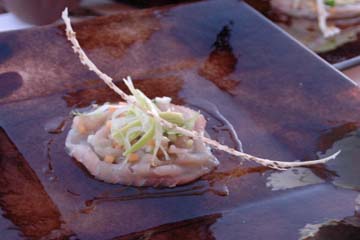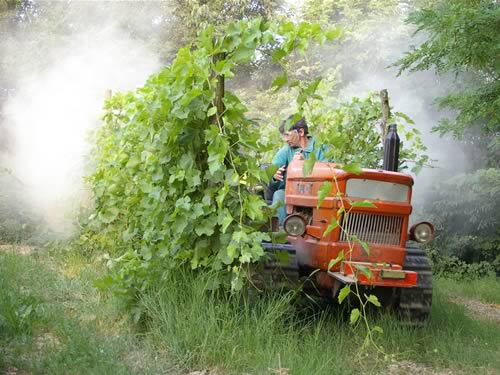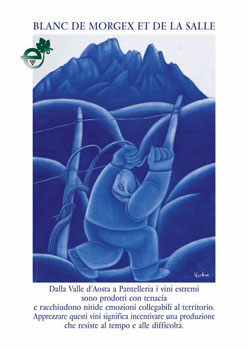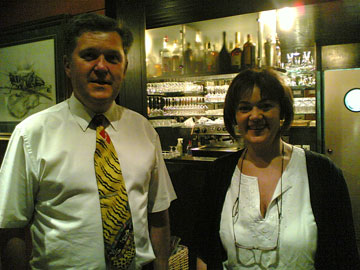For the last two weeks we have been traveling through Sardinia and central Italy. Our trip began with an overnight stop at the Relais San Damiàn, in the countryside behind Imperia, a very beautiful small agriturismo (farm hotel) with ample spacious rooms and a small pool nestled in an olive grove. The stop was needed because we had planned a dinner in Imperia, with friends from the alt.food.wine newsgroup: Nils from Sweden, Dale from New York, Luk and Fil from Liguria, and consorts.

Imperia is one of those places that one would normally skip as a tourist, yet it is interesting and in many ways charming. Imperia was an invention of a certain past leader of Italy, the one with the large chin that made the trains run on time but set Italy on the wrong path; the city is actually the artificial fusion of the very large fishing ports of Oneglia and San Maurizio. Agrodolce is situated in Oneglia right on the quays, in a curious mélange of residential palaces and industry, so it is normal, while sitting at a table under the arcades, to get the occasional whiff of olive oil, fish and pasta from the nearby plants. The chef of Agrodolce is Andrea Sarri, and with his wife Alessandra he runs what I consider to be one of the best fish restaurants. Photos of some of the dishes are interspersed throughout this article.


 Traveling for work is much more enjoyable if you can fit in some gastronomic discoveries. This week in Slovenia I took my friends Harry and Vondelle to the
Traveling for work is much more enjoyable if you can fit in some gastronomic discoveries. This week in Slovenia I took my friends Harry and Vondelle to the